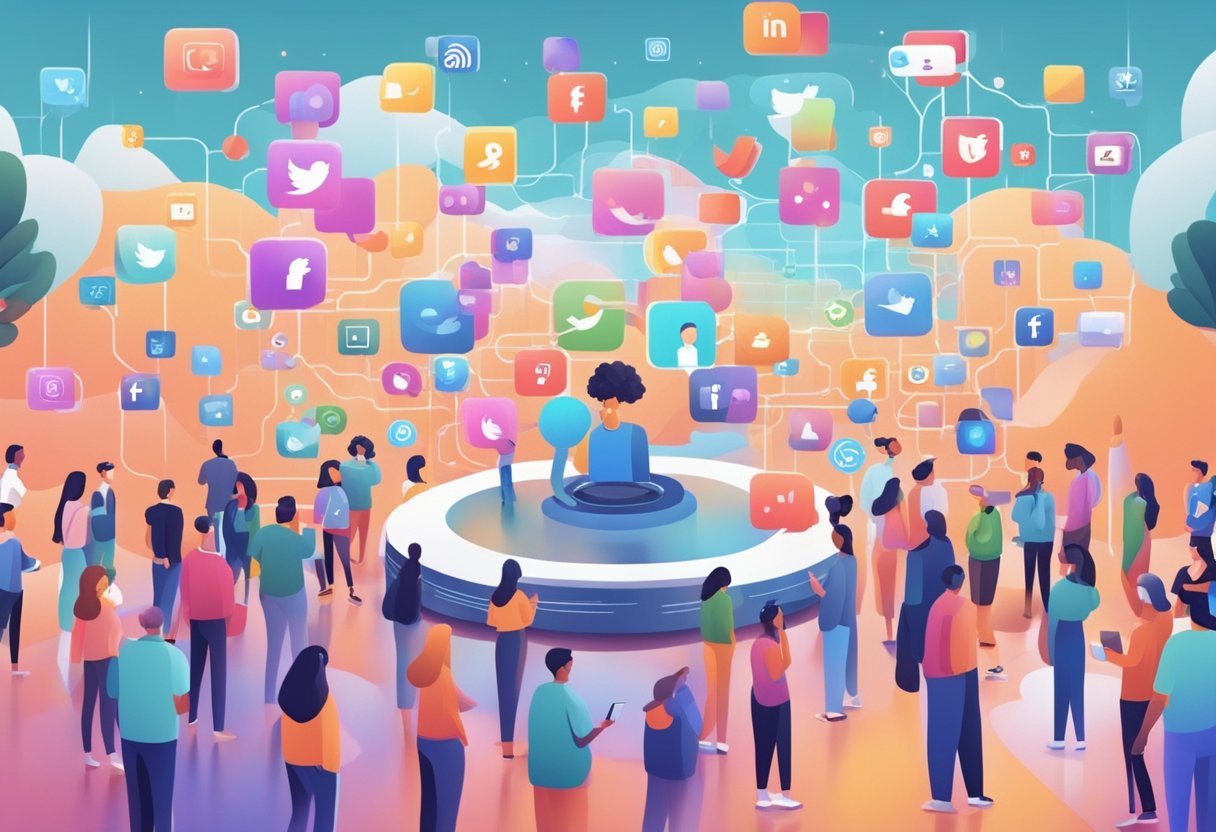The concept of the metaverse has been around for decades, with the term coined by author Neal Stephenson in his science fiction novel Snow Crash in 1992. It refers to a virtual world that is fully immersive, allowing users to interact with each other and their environment in a way that is similar to the real world. The metaverse is not just limited to virtual reality, but also includes augmented reality and other forms of digital immersion.
The history of the metaverse is a long and complex one, with many technological milestones along the way. The pioneers of the metaverse include individuals and companies who have contributed to its development over the years, from the early days of virtual reality to the modern era of augmented reality and beyond. Some of the key technologies that have contributed to the metaverse include 3D graphics, artificial intelligence, and blockchain technology.
The metaverse timeline is a fascinating look at the evolution of virtual worlds and digital immersion. It is a testament to the power of human imagination and innovation, and a glimpse into what the future may hold for us in terms of virtual and augmented reality. Whether you are a gamer, a tech enthusiast, or simply curious about the possibilities of the metaverse, there is much to explore and discover in this exciting new world.
Historical Evolution of the Metaverse
The concept of the metaverse has been around for decades, with roots in science fiction and early virtual reality experiments. Over time, it has evolved into a complex and multifaceted concept that encompasses a wide range of technologies and applications.
Early Concepts and Science Fiction Roots
The term “metaverse” was first used in Neal Stephenson’s 1992 novel, Snow Crash. In the book, the metaverse was a virtual reality world where people could interact with each other and with computer-generated environments. This early concept of the metaverse was heavily influenced by science fiction, and it laid the groundwork for later virtual reality technologies.
One of the earliest examples of virtual reality technology was the Sensorama, a machine developed in the 1950s by Morton Heilig. The Sensorama was a large cabinet that included a stereoscopic display, speakers, and a vibrating seat. Users could experience short films that included a variety of sensory inputs, such as smells and wind.
Development of Virtual Worlds and Online Gaming
In the 1990s, virtual worlds and online gaming began to emerge as popular applications of virtual reality technology. One of the most influential early virtual worlds was Second Life, which was launched in 2003. Second Life allowed users to create their own avatars and interact with each other in a virtual world that included a wide range of environments and activities.
Online gaming also played a significant role in the development of the metaverse. Games like World of Warcraft and Minecraft allowed players to create and explore virtual worlds, and they paved the way for more sophisticated virtual reality technologies.
Rise of Social Media and Virtual Communities
In recent years, the rise of social media and virtual communities has led to a renewed interest in the metaverse. Platforms like Facebook and Instagram allow users to create and share content in virtual spaces, and they have become an important part of many people’s daily lives.
As the metaverse continues to evolve, it is likely that we will see new applications and technologies emerge. From virtual reality gaming to social media platforms, the metaverse has the potential to transform the way we interact with each other and with the world around us.
Metaverse timeline
Here is a timeline of the Metaverse from the 1930s to 20204:
Early Visions and Building Blocks (1930s-2000s):
- 1935: Science fiction writer Stanley G. Weinbaum envisions a virtual world called “Pygmalion’s Spectacles” in his short story.
- 1962: Morton Heilig creates Sensorama, a multisensory immersive experience machine.
- 1968: The film “2001: A Space Odyssey” depicts a virtual reality training system.
- 1973: The first virtual world, “Maze War,” is created.
- 1984: William Gibson coins the term “cyberspace” in his novel “Neuromancer.”
- 1992: Neal Stephenson coins the term “metaverse” in his novel “Snow Crash.”
- 1993: The first web browser, Mesh, is released.
- 1997: The online virtual world “Active Worlds” launches.
- 2003: The virtual world “Second Life” launches.
Key Advances and Growing Interest (2000s-2020s):
- 2006: “Roblox” launches, offering a platform for user-created games and experiences.
- 2009: Bitcoin, a decentralized digital currency, is created.
- 2012: The Oculus Rift VR headset launches on Kickstarter.
- 2014: Facebook acquires Oculus for $2 billion.
- 2015: Decentraland, a blockchain-based virtual world, is founded.
- 2016: Pokémon GO popularizes augmented reality gaming.
- 2017: Fortnite introduces social experiences and virtual concerts within its game.
- 2020: The COVID-19 pandemic accelerates the adoption of virtual communication and collaboration tools.
Accelerated Development and Mainstream Adoption (2020s-Present):
- 2021: Facebook rebrands to Meta, signaling its focus on the metaverse.
- 2022: Major brands and companies, including Nike, Disney, and Microsoft, invest in metaverse projects.
- 2023: New hardware, software, and infrastructure advancements continue to shape the metaverse landscape.
- Beyond: The metaverse is expected to evolve and expand further, potentially revolutionizing how we work, play, socialize, and conduct business in the digital realm.
Technological Foundations and Innovations
Virtual and Augmented Reality Technologies
The development of virtual and augmented reality technologies has been a crucial foundation for the metaverse. VR headsets like the Oculus Rift and AR technologies like Microsoft’s HoloLens have enabled users to experience immersive virtual worlds and interact with them in new ways.
These technologies have advanced significantly in recent years, with improvements in hardware such as lidar and software allowing for more realistic and dynamic environments.
Advancements in AI and Hardware
Advancements in AI and hardware have also played a key role in the development of the metaverse. Machine learning algorithms have been used to create more intelligent and responsive virtual environments, while improvements in hardware have allowed for more powerful and efficient processing of data.
These developments have enabled the creation of more complex and interactive virtual worlds, with greater levels of detail and realism.
Blockchain, Cryptocurrency, and NFTs
Blockchain technology, cryptocurrency, and NFTs have also been important innovations in the development of the metaverse. Blockchain technology has enabled the creation of decentralized virtual worlds, where users can own and trade virtual assets securely and transparently. Cryptocurrencies like Bitcoin and Ethereum have provided a means of exchange within these virtual worlds, while NFTs have allowed for the creation and ownership of unique and valuable virtual assets.
The technological foundations and innovations of the metaverse have been crucial in enabling the creation of immersive and interactive virtual worlds. Advances in VR and AR technologies, AI and hardware, and blockchain, cryptocurrency, and NFTs have all contributed to the development of this new frontier of digital experience.
Major Players and Corporate Influence
The metaverse has attracted the attention of major players in the tech industry, gaming companies and investors alike. The following subsections will explore the influence of these entities on the metaverse and virtual economies.
Tech Giants Entering the Metaverse
Facebook (now Meta) has made significant strides in the metaverse space with the development of Horizon Workrooms, a virtual reality workspace, and the acquisition of VR headset maker Oculus. Microsoft has also entered the metaverse space with its acquisition of AltspaceVR, a social VR platform. Apple has been investing heavily in AR and VR technology and is rumored to be developing its own VR headset.
Google has experimented with virtual worlds such as Second Life and Google Lively, but has yet to make significant moves in the metaverse space. However, the company has made investments in AR and VR technology and could be a major player in the future.
Gaming Companies and Virtual Economies
Gaming companies such as Roblox, Fortnite, and Minecraft have already established virtual economies within their games, and are well-positioned to expand into the metaverse. These companies have a large user base and a proven track record of creating engaging virtual experiences.
Epic Games, the creator of Fortnite, has invested heavily in the metaverse space with the acquisition of SuperAwesome, a kid-safe technology platform, and the development of its own metaverse platform, Core.
Investment and Market Dynamics
Investors have been pouring money into the metaverse space, with Goldman Sachs predicting that the metaverse could be an $8 trillion opportunity. Companies such as Epic Games and Roblox have already gone public, with their stock prices soaring on the back of the metaverse hype.
As the metaverse continues to evolve, it will be interesting to see how these major players and investors shape the landscape. The metaverse has the potential to revolutionize the way we interact with technology, and the companies that are able to successfully navigate this new frontier will be well-positioned for success.
Metaverse Experiences and User Interaction
The metaverse is a virtual world that is designed to provide immersive experiences to users. This section will explore the different ways users can interact with the metaverse and the experiences they can have.
Social and Multiplayer Online Spaces
One of the most popular applications of the metaverse is social and multiplayer online spaces. These spaces allow users to interact with each other in a virtual environment, using avatars to represent themselves. Users can chat, play games, attend events, and even create their own virtual spaces.
Virtual Real Estate and Digital Ownership
Virtual real estate is another important aspect of the metaverse. Users can buy and sell virtual land, buildings, and other assets, just as they would in the real world. Digital ownership is also a key feature of the metaverse, allowing users to own and control their virtual assets.
Education, Healthcare, and Professional Applications
The metaverse has potential applications in education, healthcare, and other professional fields. For example, virtual classrooms and training simulations can provide immersive learning experiences. Virtual healthcare can allow patients to receive care remotely, and virtual meetings can provide a more immersive and engaging alternative to traditional video conferencing.
The metaverse provides a range of experiences and opportunities for user interaction. From social and multiplayer online spaces to virtual real estate and professional applications, the metaverse has the potential to revolutionize the way we interact with technology and each other.
Challenges and Future Directions
Privacy, Security, and Ethical Concerns
As the metaverse continues to expand, it is important to address privacy, security, and ethical concerns. With the vast amount of personal information that users may share in the metaverse, there is a need for strict privacy regulations to protect users from potential data breaches.
Moreover, the metaverse poses a significant safety risk as users may face cyberbullying, harassment, and other forms of online abuse. Therefore, the metaverse must develop robust safety measures to ensure that users feel safe and secure in the virtual world.
Interoperability and Decentralization
Interoperability and decentralization are critical factors that will shape the future of the metaverse. Interoperability will enable users to move seamlessly between different virtual worlds, while decentralization will ensure that the metaverse is not controlled by a single entity.
Decentraland, a virtual world built on the Ethereum blockchain, is an example of a decentralized metaverse that allows users to own and control their virtual assets. This model ensures that users have complete ownership and control over their virtual assets and data.
Cultural Impact and Societal Adoption
The cultural impact and societal adoption of the metaverse will be critical in determining its success. The metaverse has the potential to create new social norms, economies, and even legal systems. Therefore, it is important to ensure that the metaverse is inclusive and accessible to all.
The metaverse economy will also play a significant role in its adoption. The creation of virtual goods, services, and experiences will drive the metaverse economy, and it is essential to ensure that this economy is fair and transparent.
The metaverse has the potential to revolutionize the way we interact with technology and each other. However, it is essential to address the challenges and future directions of the metaverse to ensure that it is a safe, inclusive, and accessible virtual world for all.
Frequently Asked Questions
What are the key milestones in the evolution of the metaverse?
The concept of the metaverse has been around for decades, but it has only recently gained significant attention. Some key milestones in the evolution of the metaverse include the release of virtual reality headsets, the growth of online gaming communities, and the development of blockchain technology. The metaverse is still in its early stages, and it remains to be seen what other milestones will be reached in the coming years.
How has the concept of the metaverse developed since 2021?
Since 2021, the concept of the metaverse has grown in popularity and has attracted significant attention from tech companies and investors. The metaverse has evolved from a niche concept to a mainstream idea that is being discussed in boardrooms around the world. The development of virtual reality technology, blockchain, and other related technologies has helped to push the metaverse concept forward.
What is the projected roadmap for Facebook’s involvement in the metaverse?
Facebook has announced plans to invest heavily in the metaverse in the coming years. The company has stated that it sees the metaverse as the next big thing in technology and is committed to building out its capabilities. Facebook has not released a specific roadmap for its involvement in the metaverse, but it is expected to be a major player in the space in the years to come.
Can you explain the stages of the metaverse’s development?
The metaverse is still in its early stages of development, but experts generally agree that it will go through several stages before it becomes a fully immersive platform. These stages include the development of virtual worlds, the integration of blockchain technology, the creation of social hubs, and the emergence of fully immersive experiences. It is expected that the metaverse will continue to evolve and grow in the coming years.
When did virtual environments like Second Life begin influencing the metaverse concept?
Virtual environments like Second Life have been around since the early 2000s and have played a significant role in shaping the metaverse concept. Second Life was one of the first platforms to offer users a fully immersive experience, and it helped to popularize the idea of virtual worlds. Since then, other platforms have emerged, and the concept of the metaverse has continued to evolve.
What is the estimated timeframe for the metaverse to become a fully immersive platform?
The timeline for the metaverse to become a fully immersive platform is difficult to predict, as it depends on a variety of factors, including technological advancements and market demand. Some experts predict that it could take several years for the metaverse to become a fully immersive platform, while others believe that it could happen much sooner. Regardless of the timeline, it is clear that the metaverse is poised to become a major force in the tech industry in the years to come.




